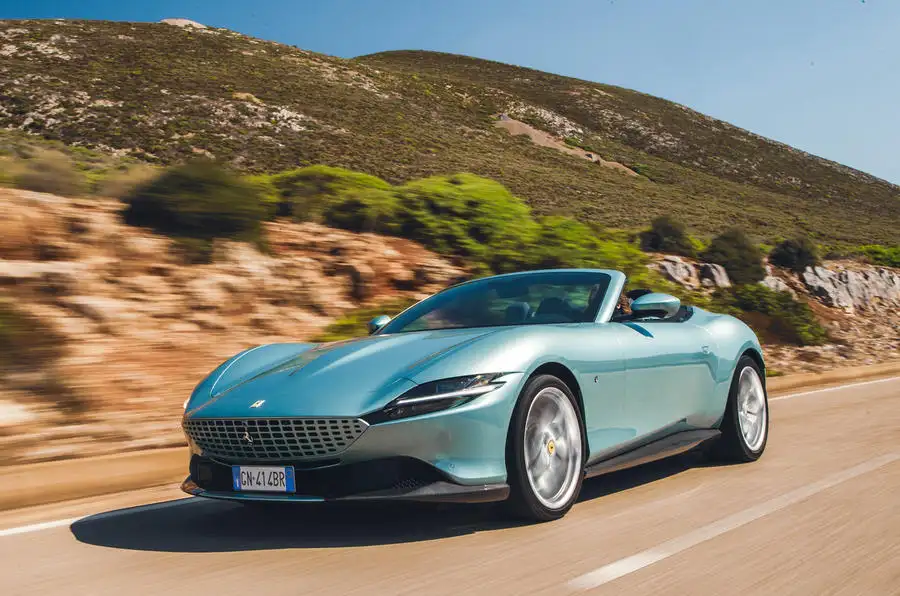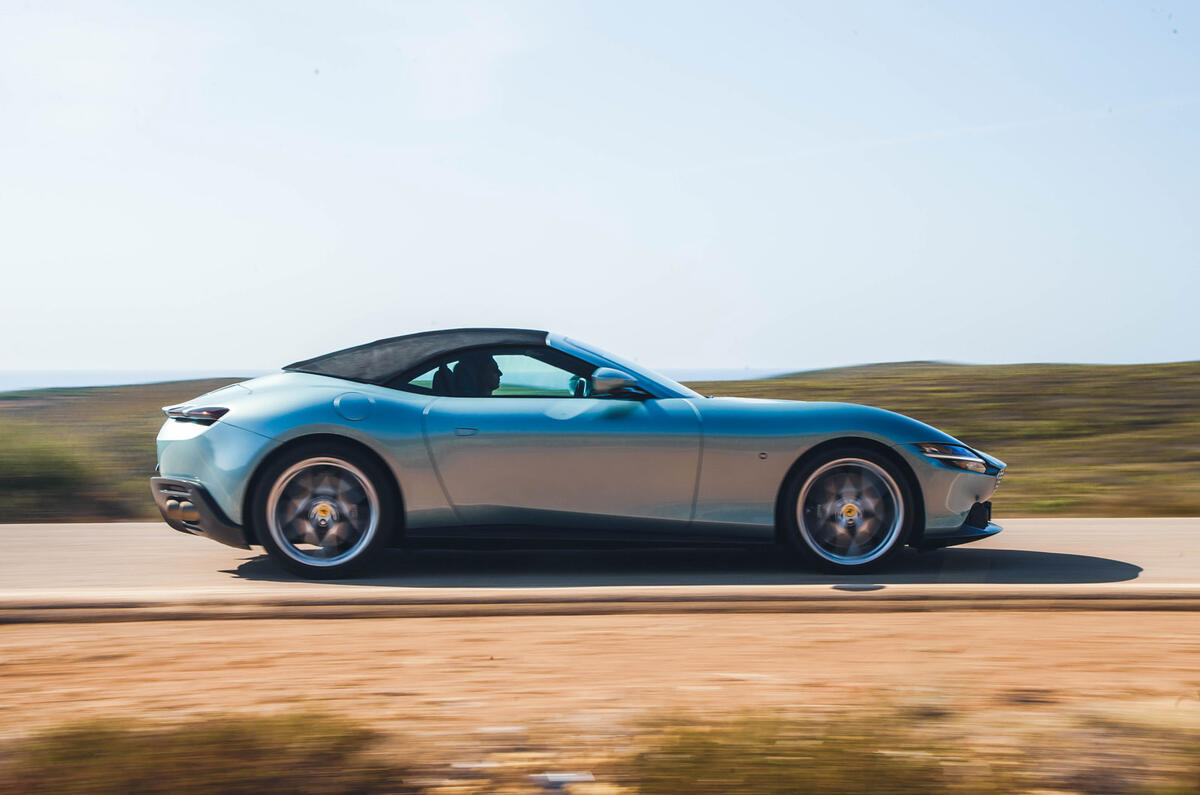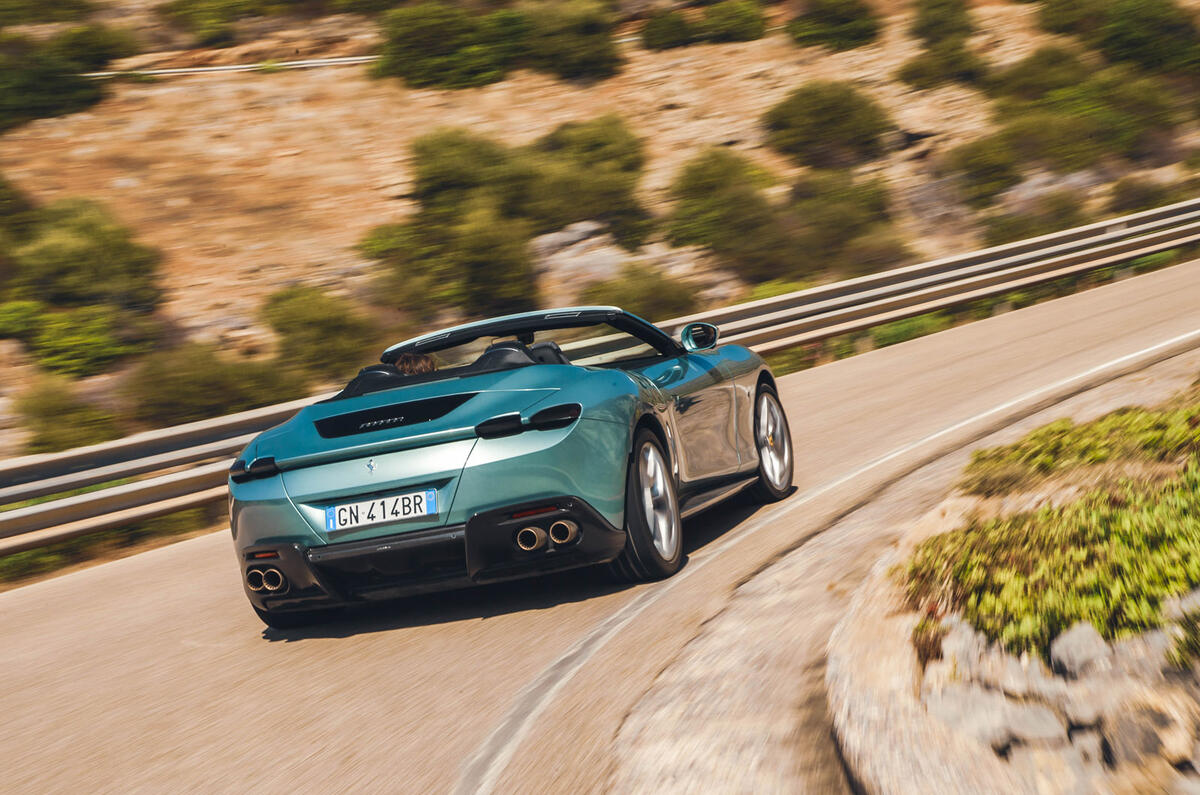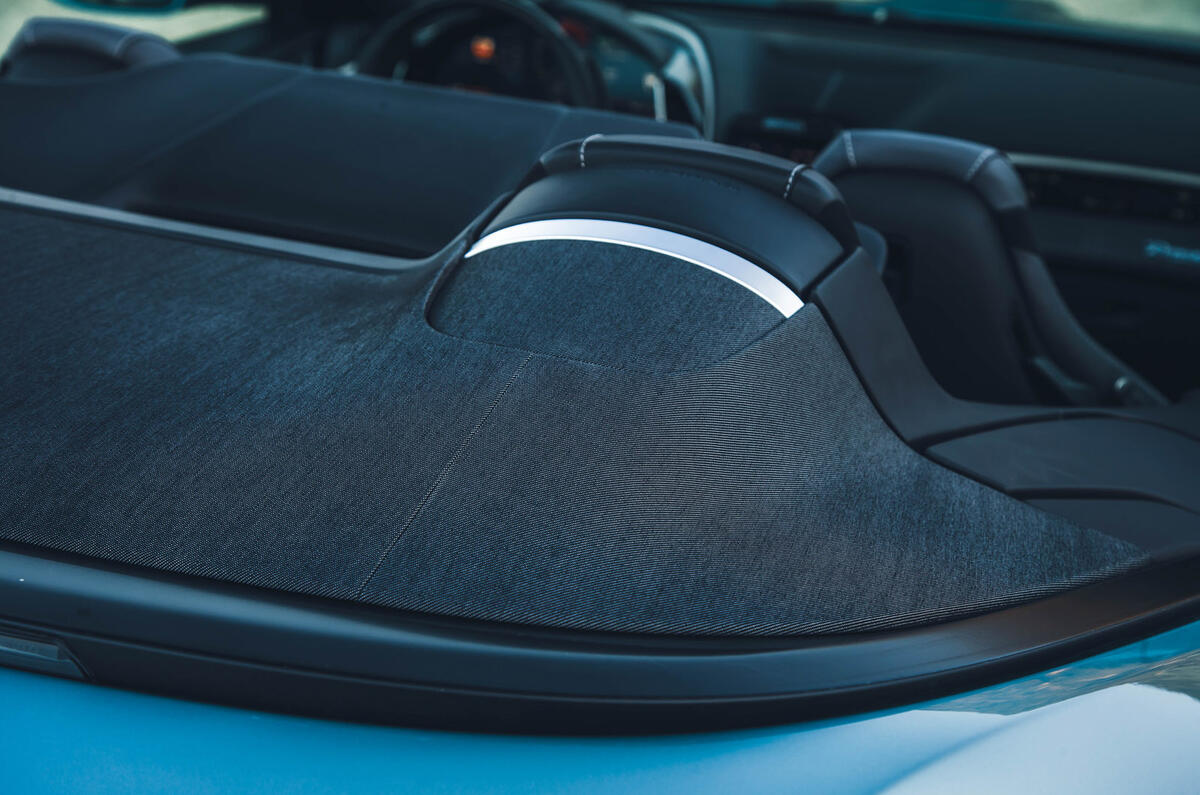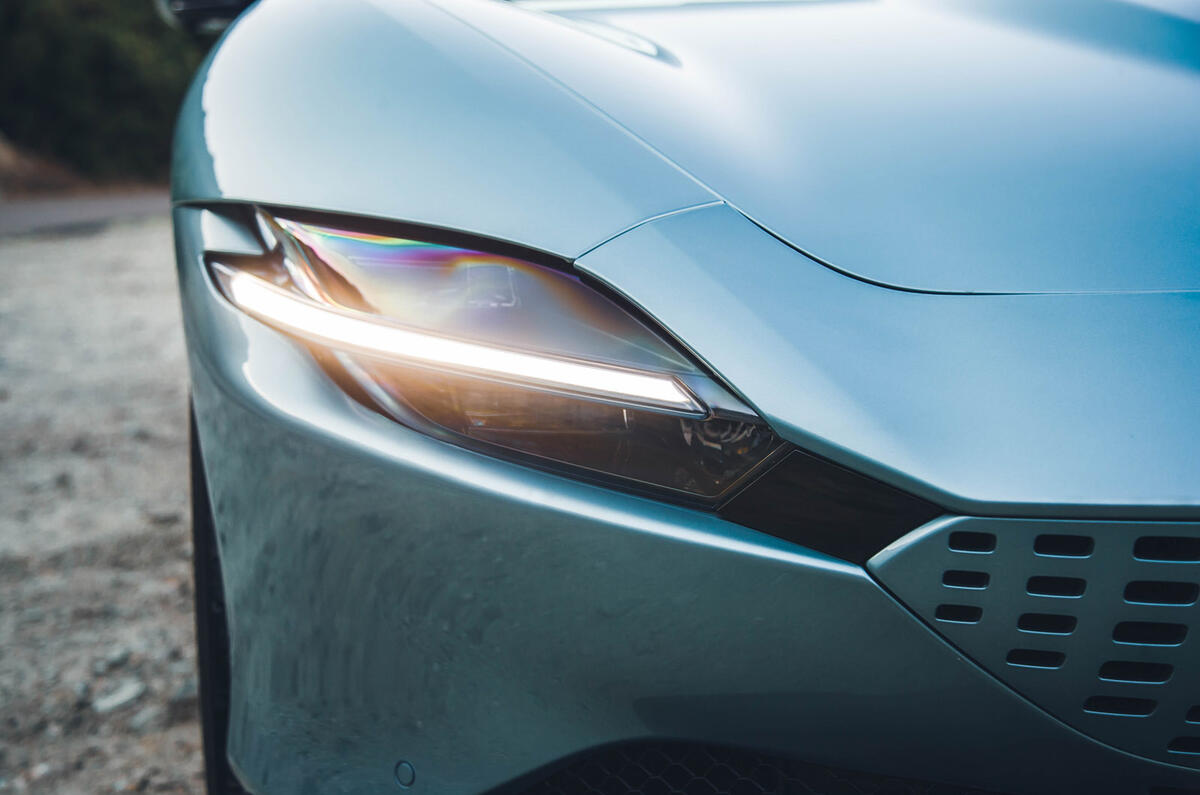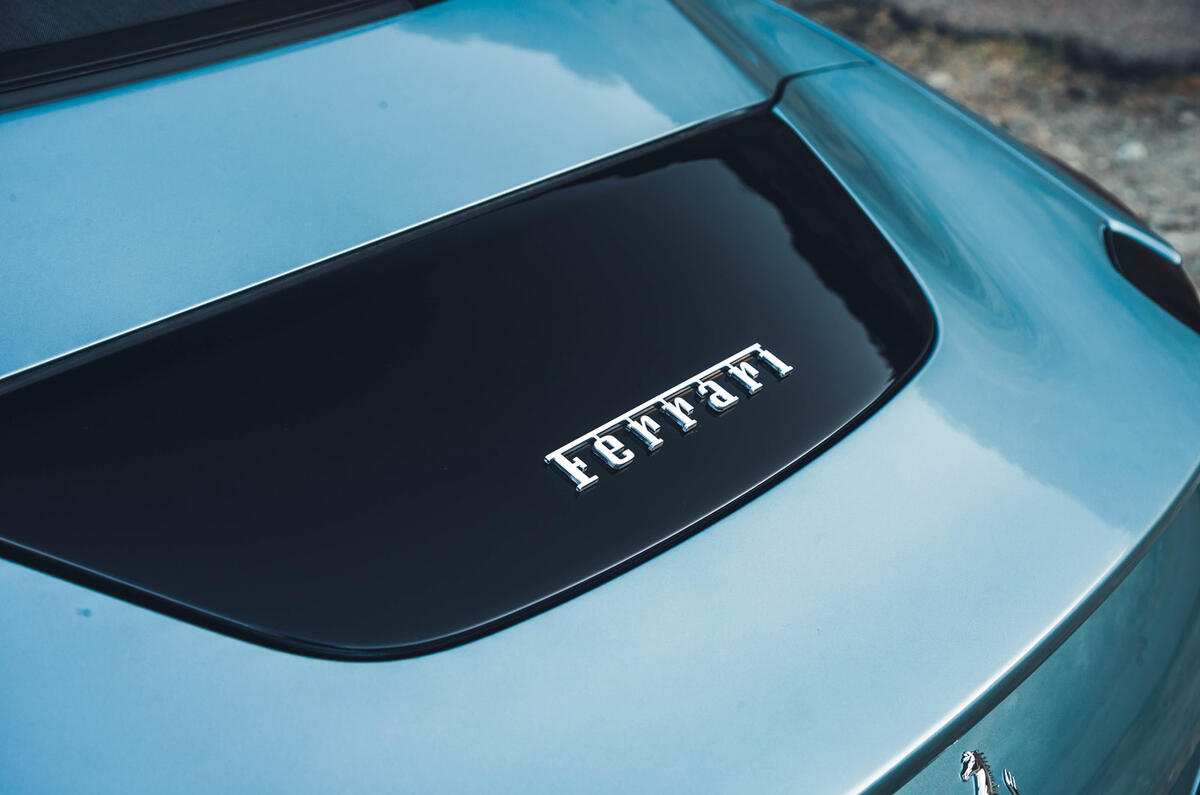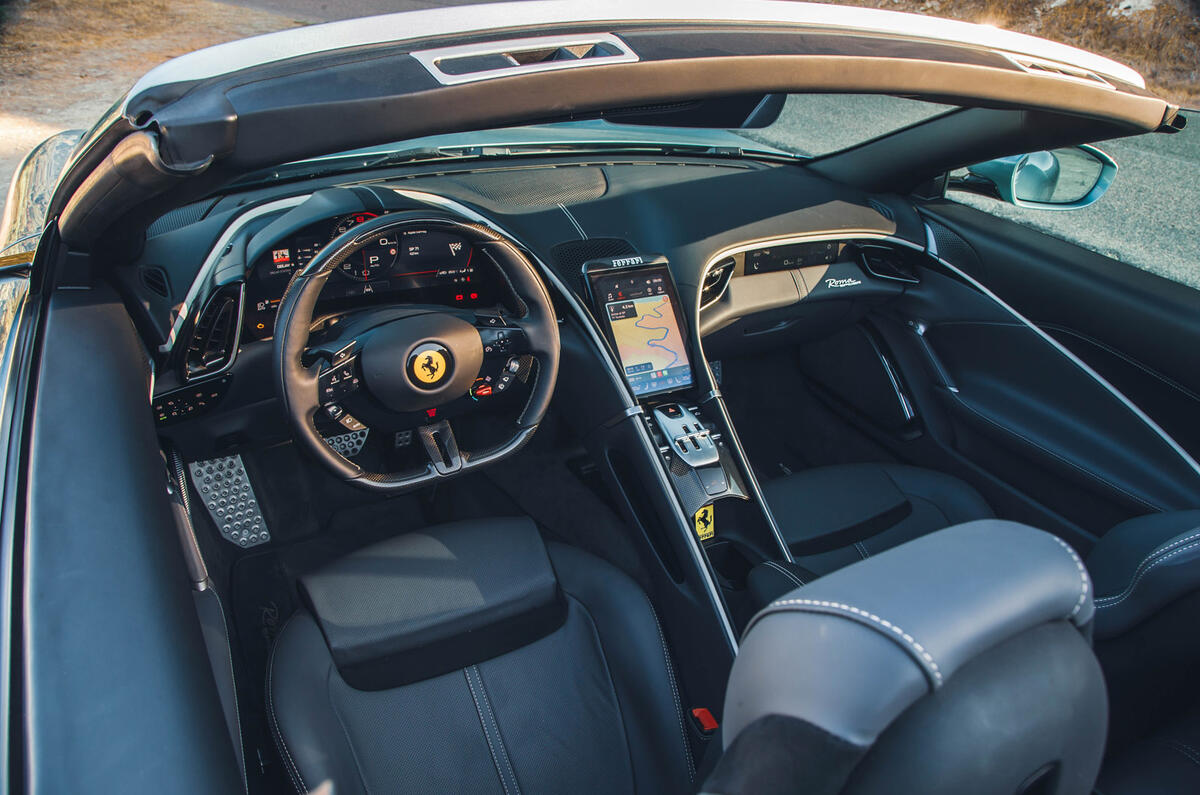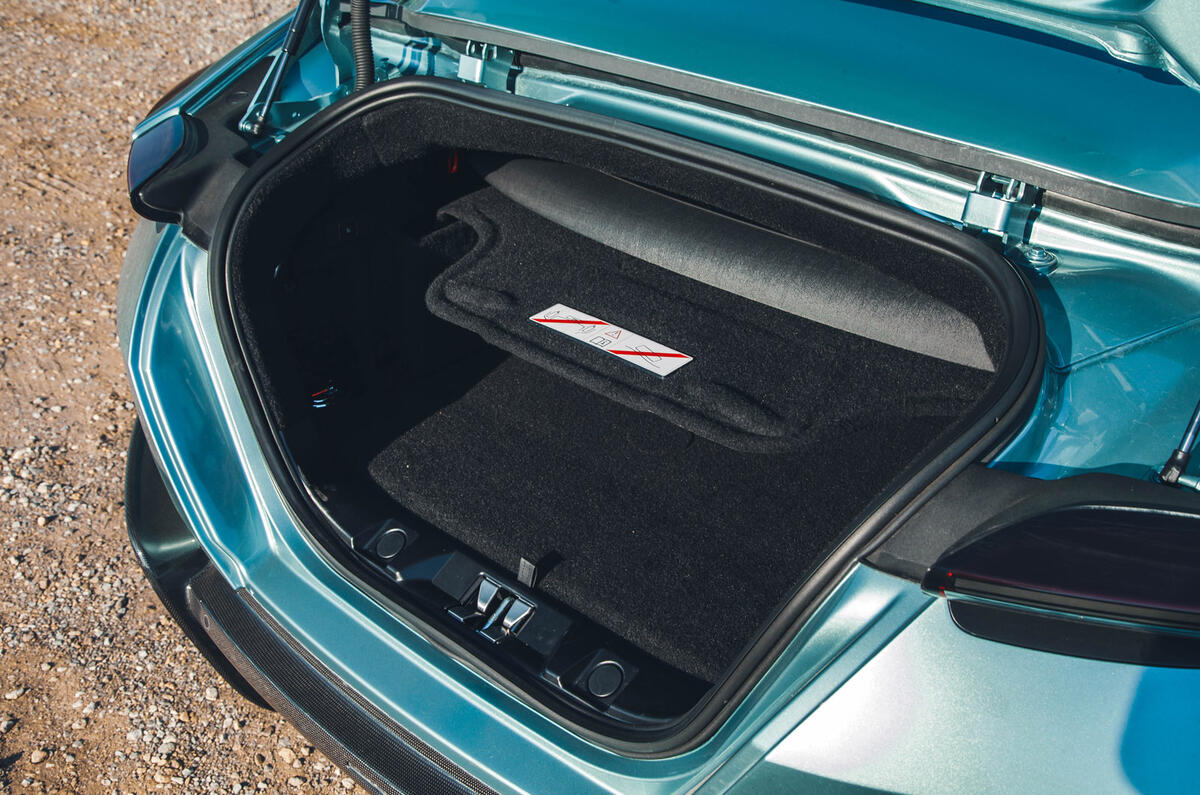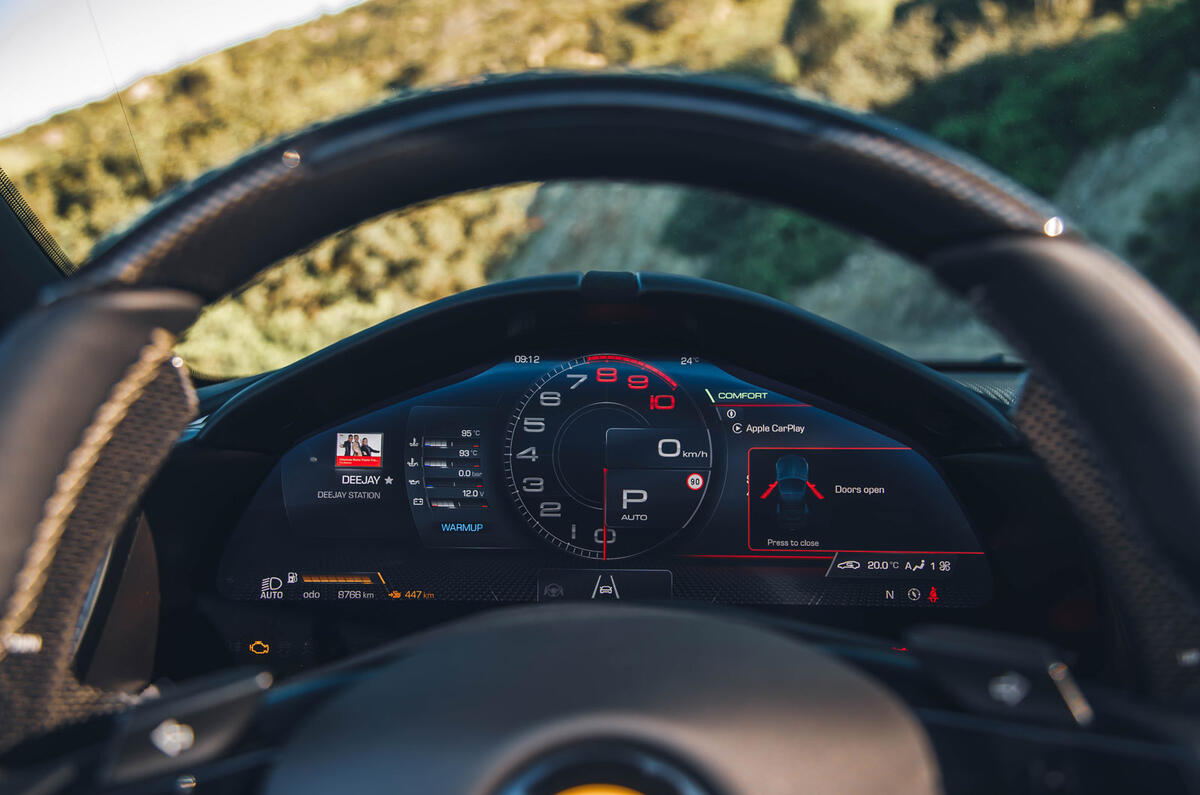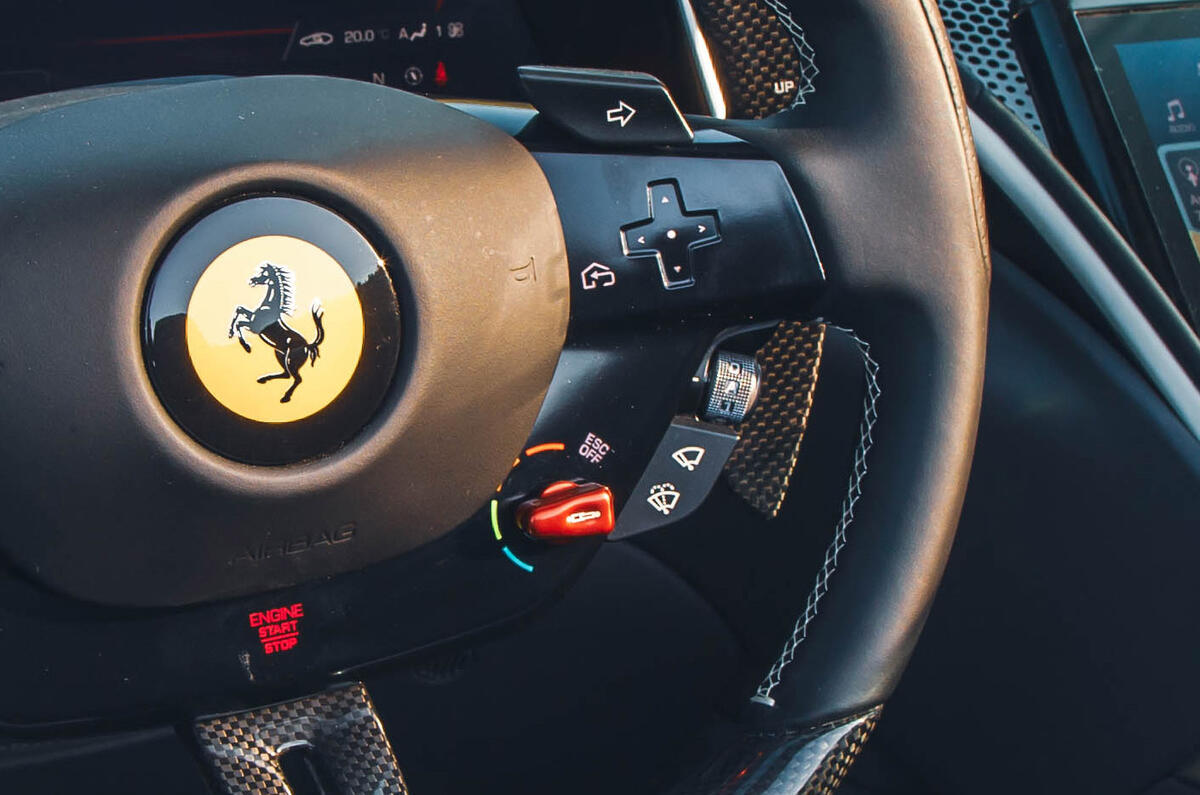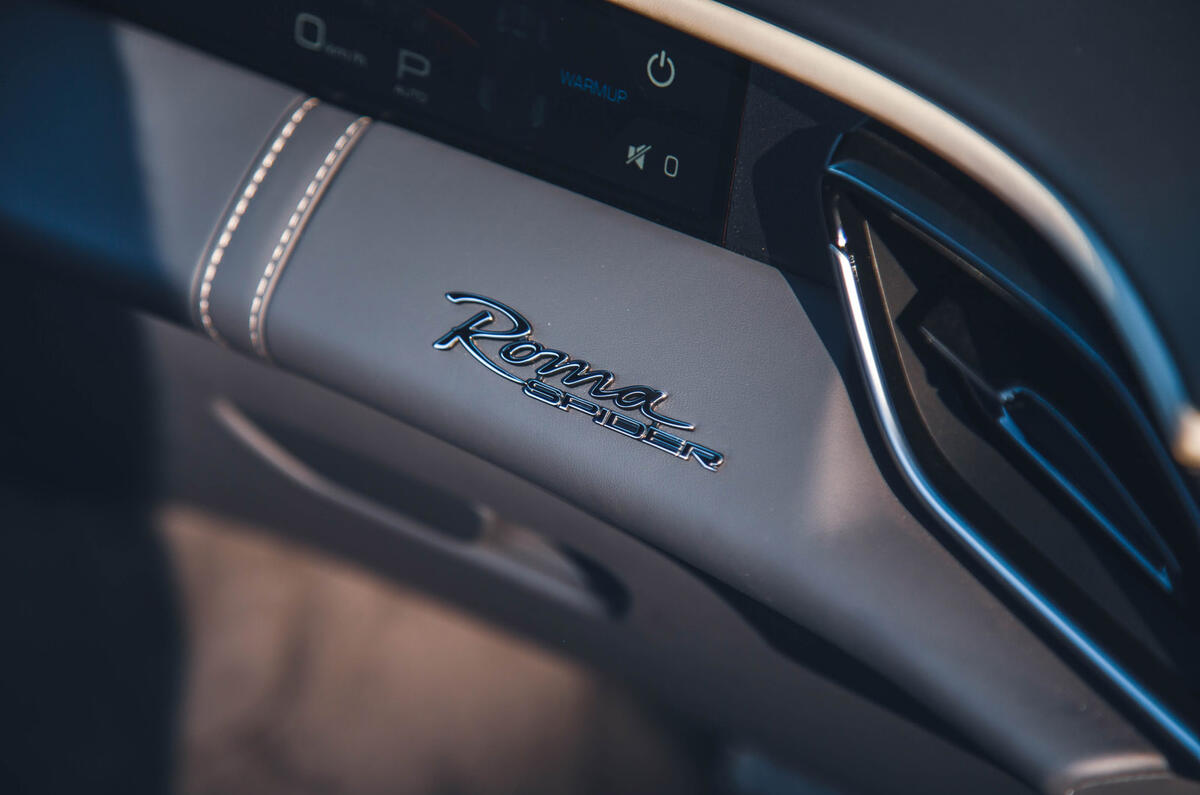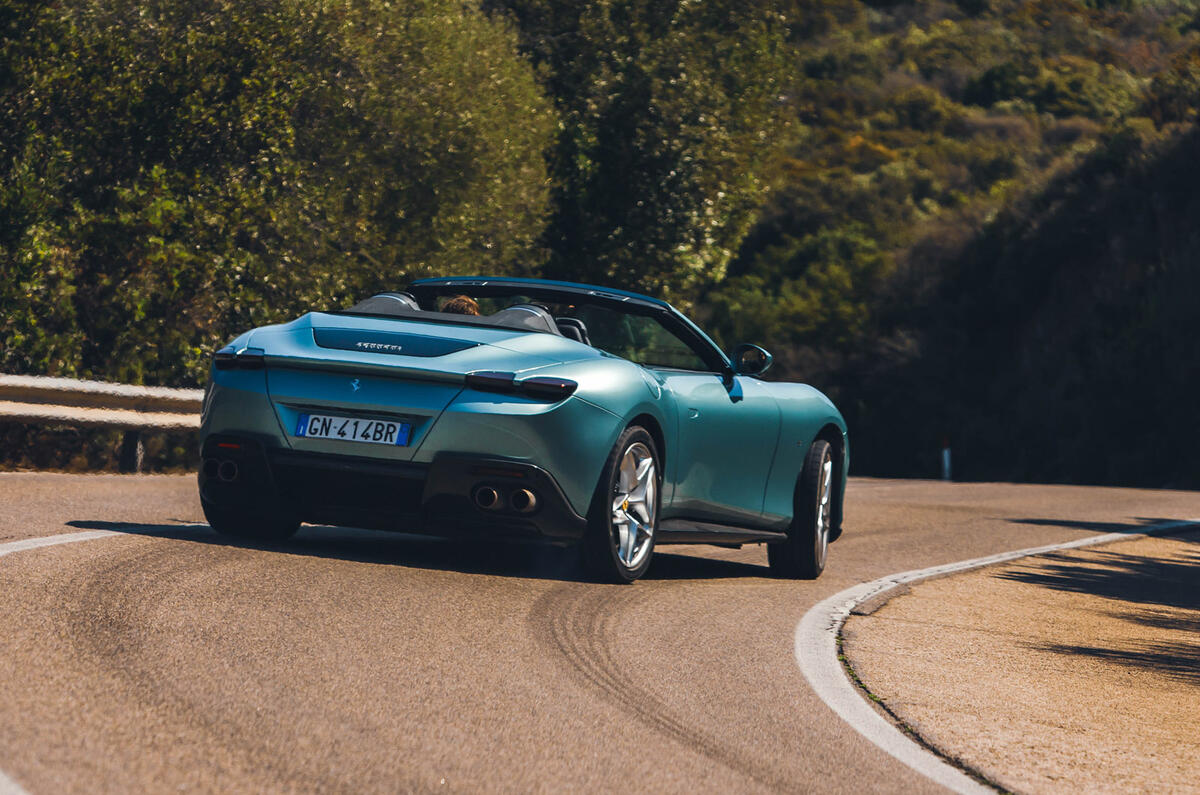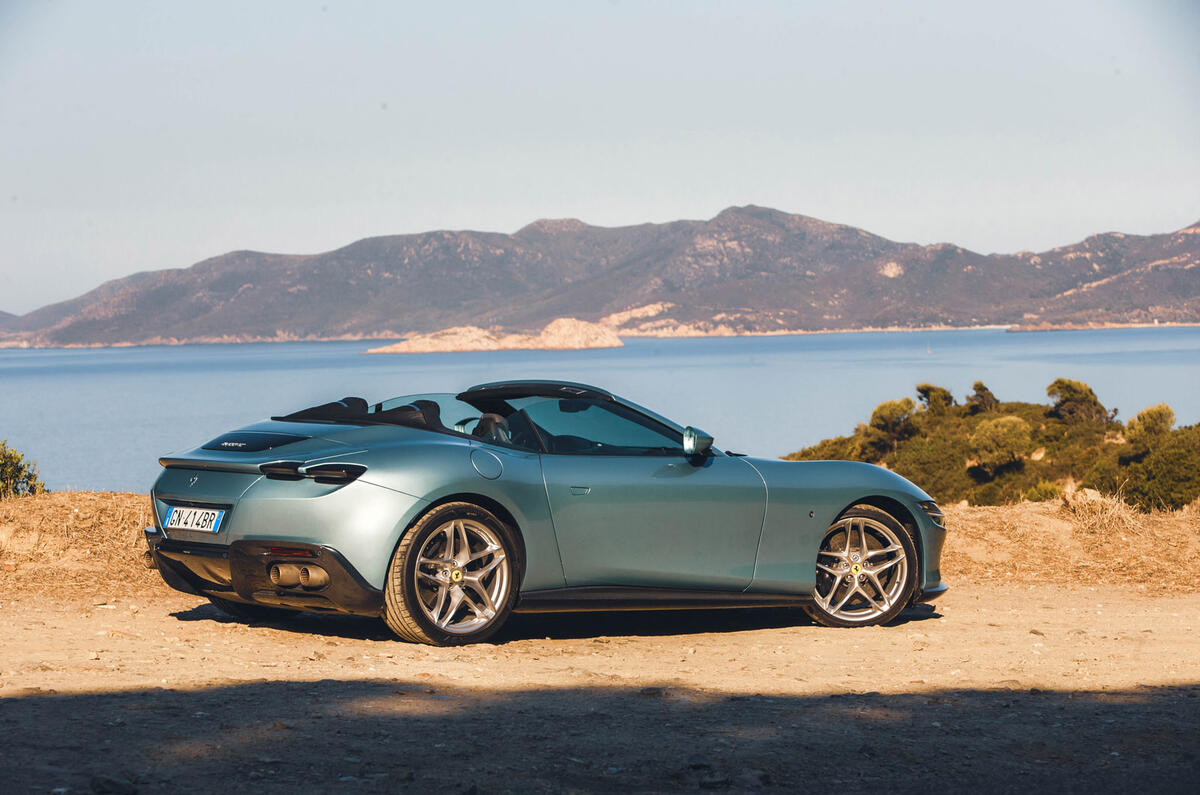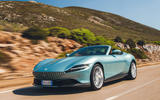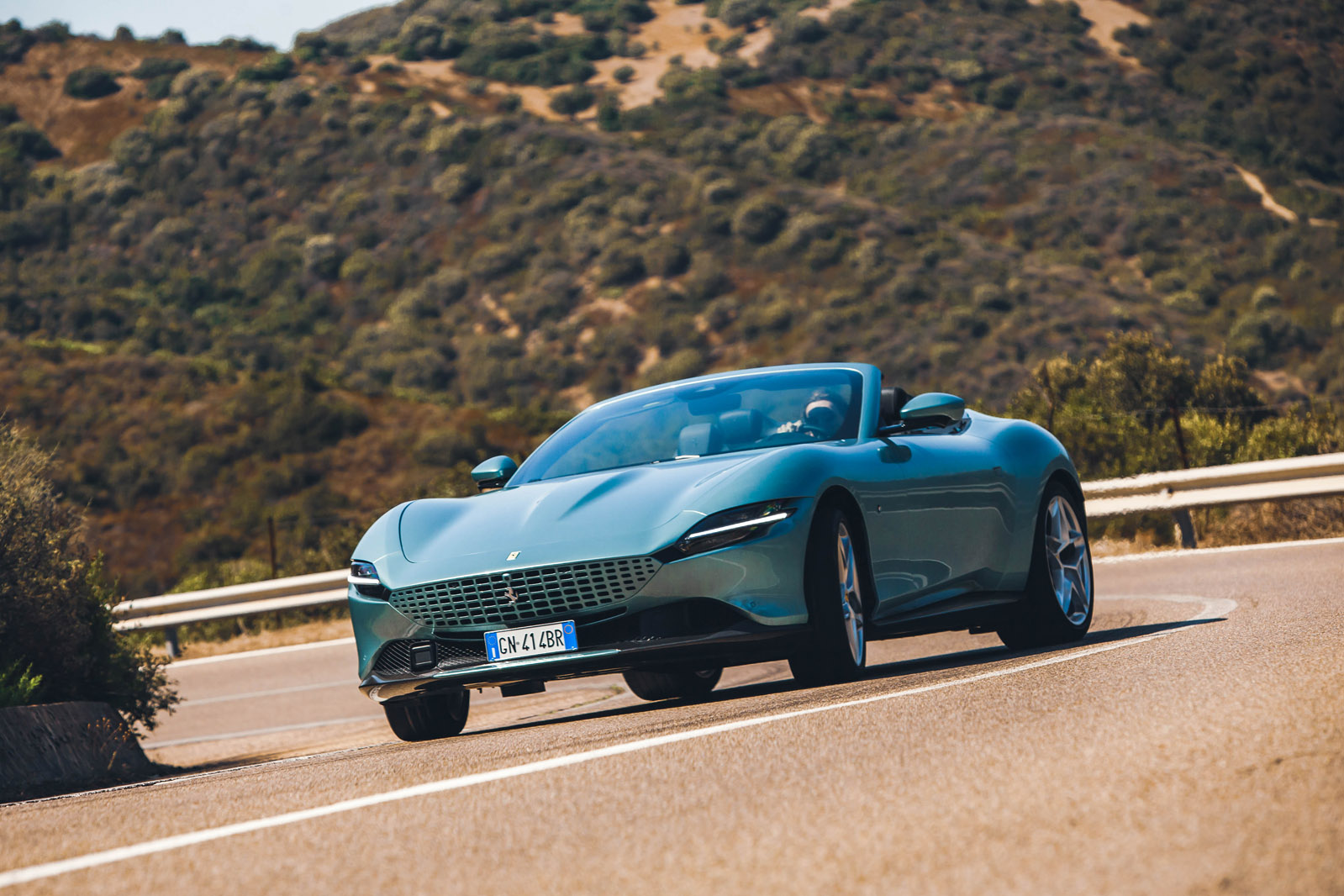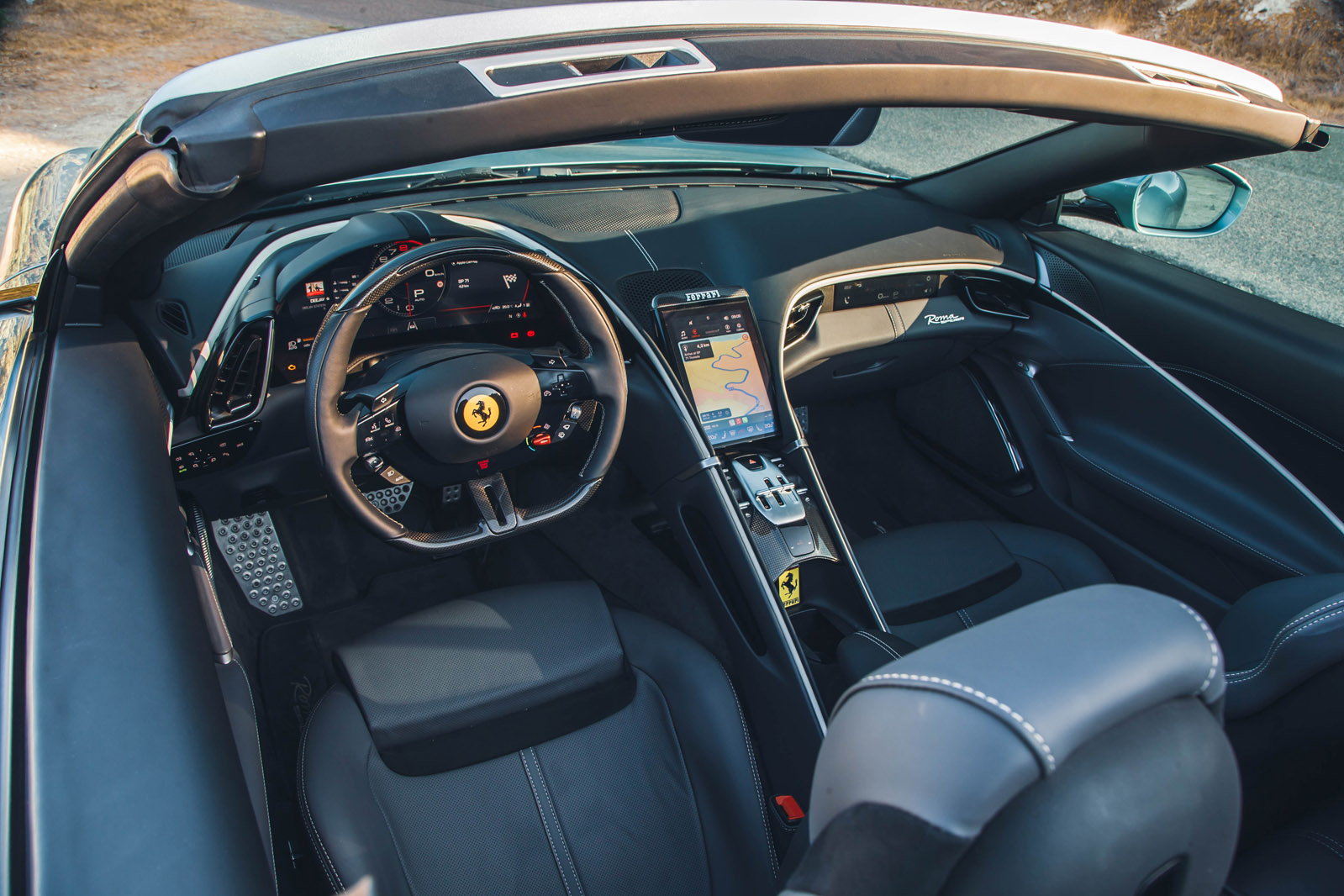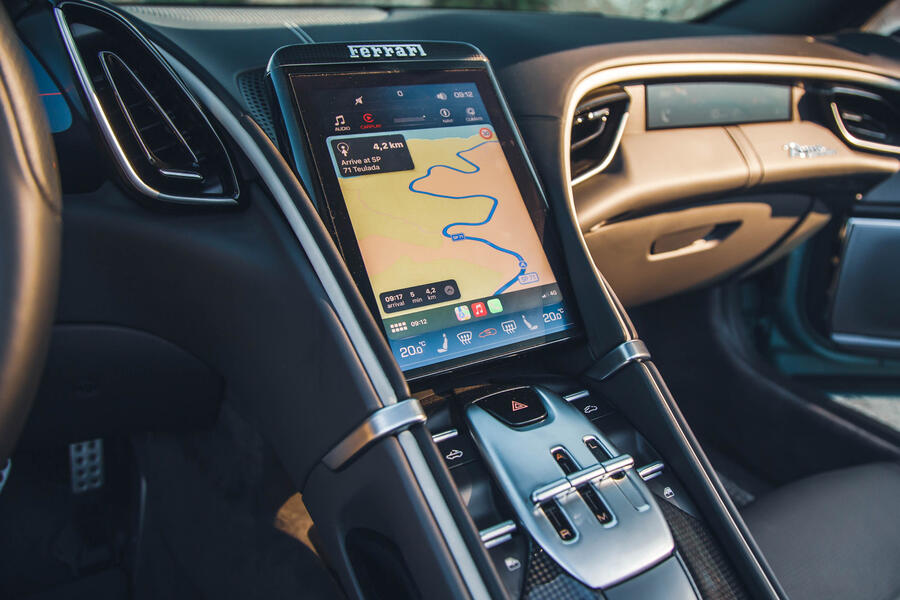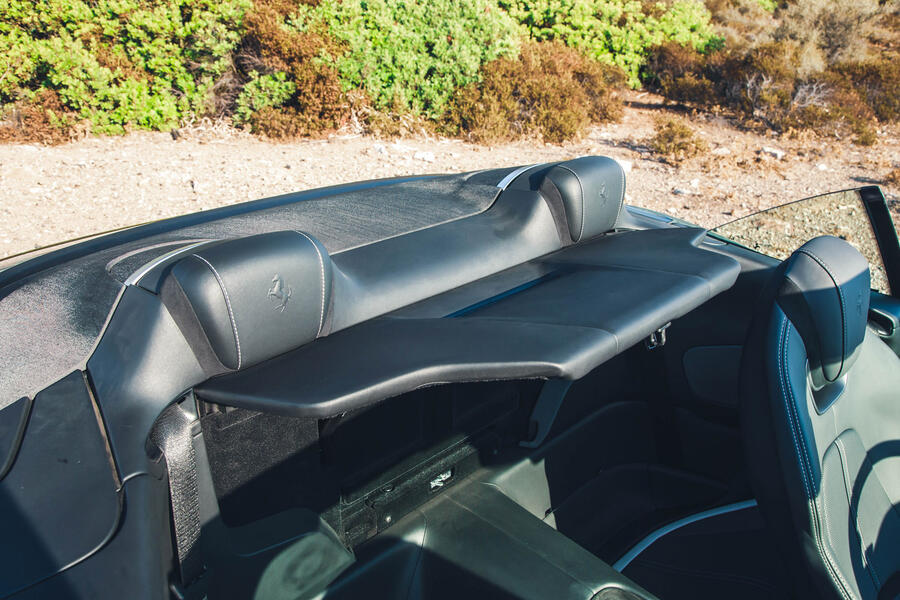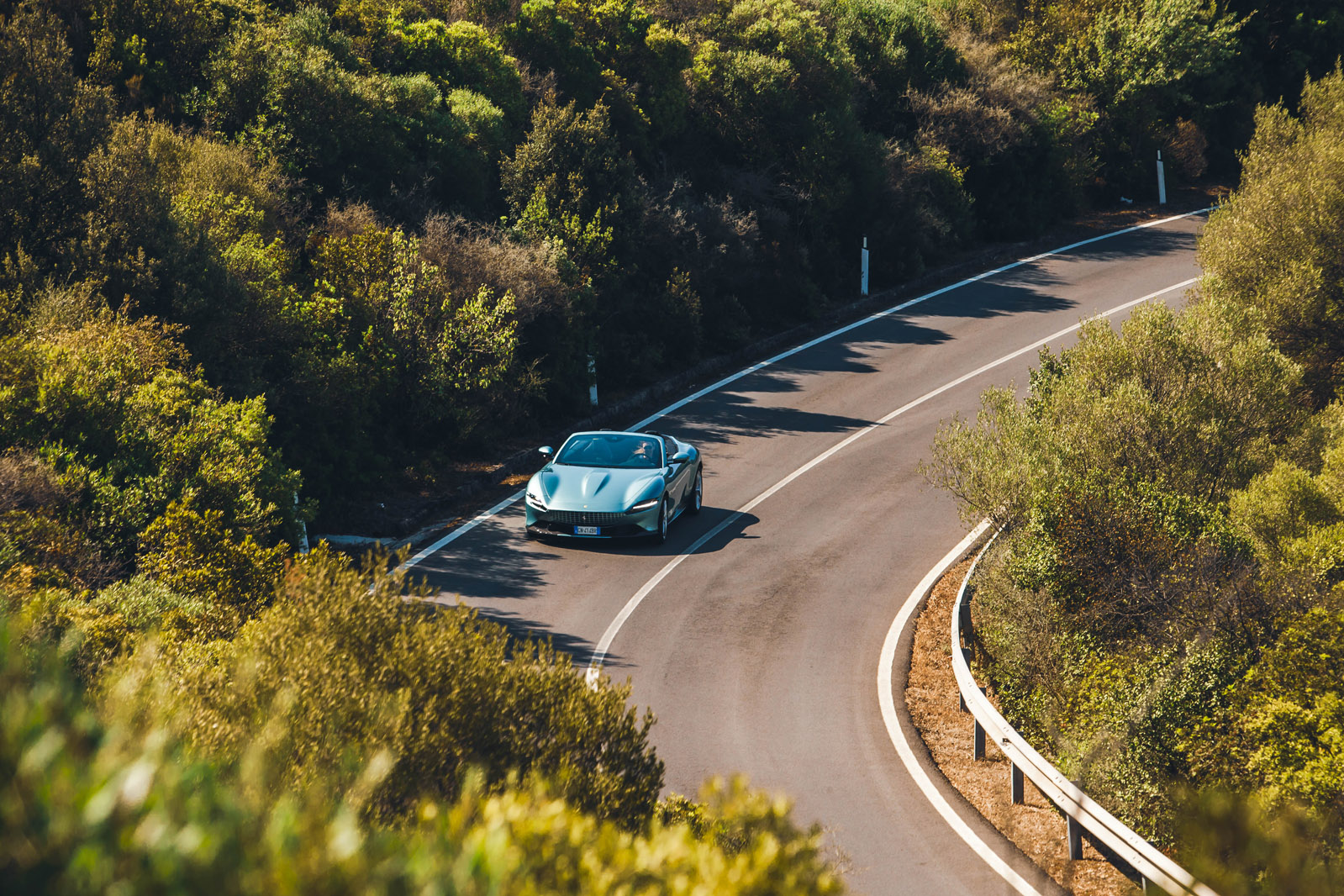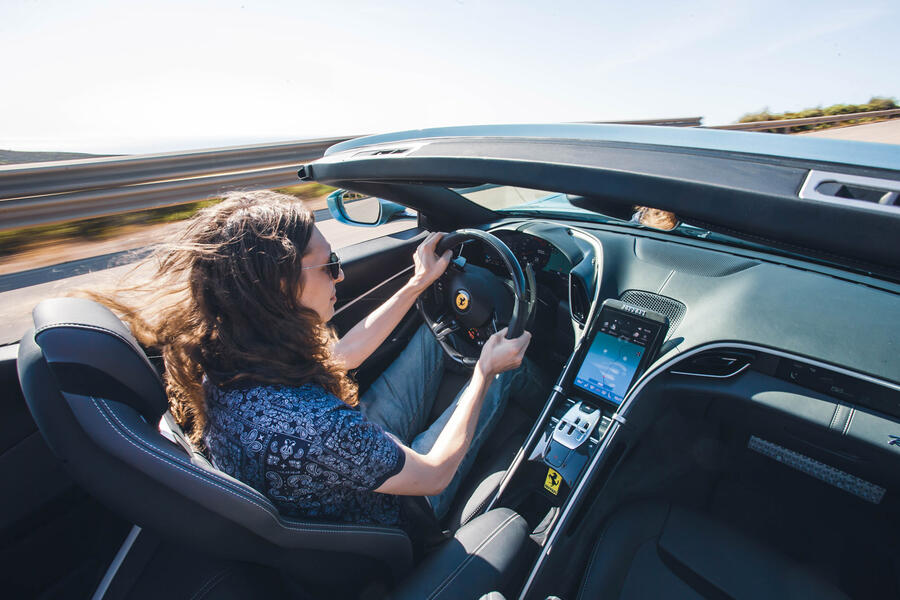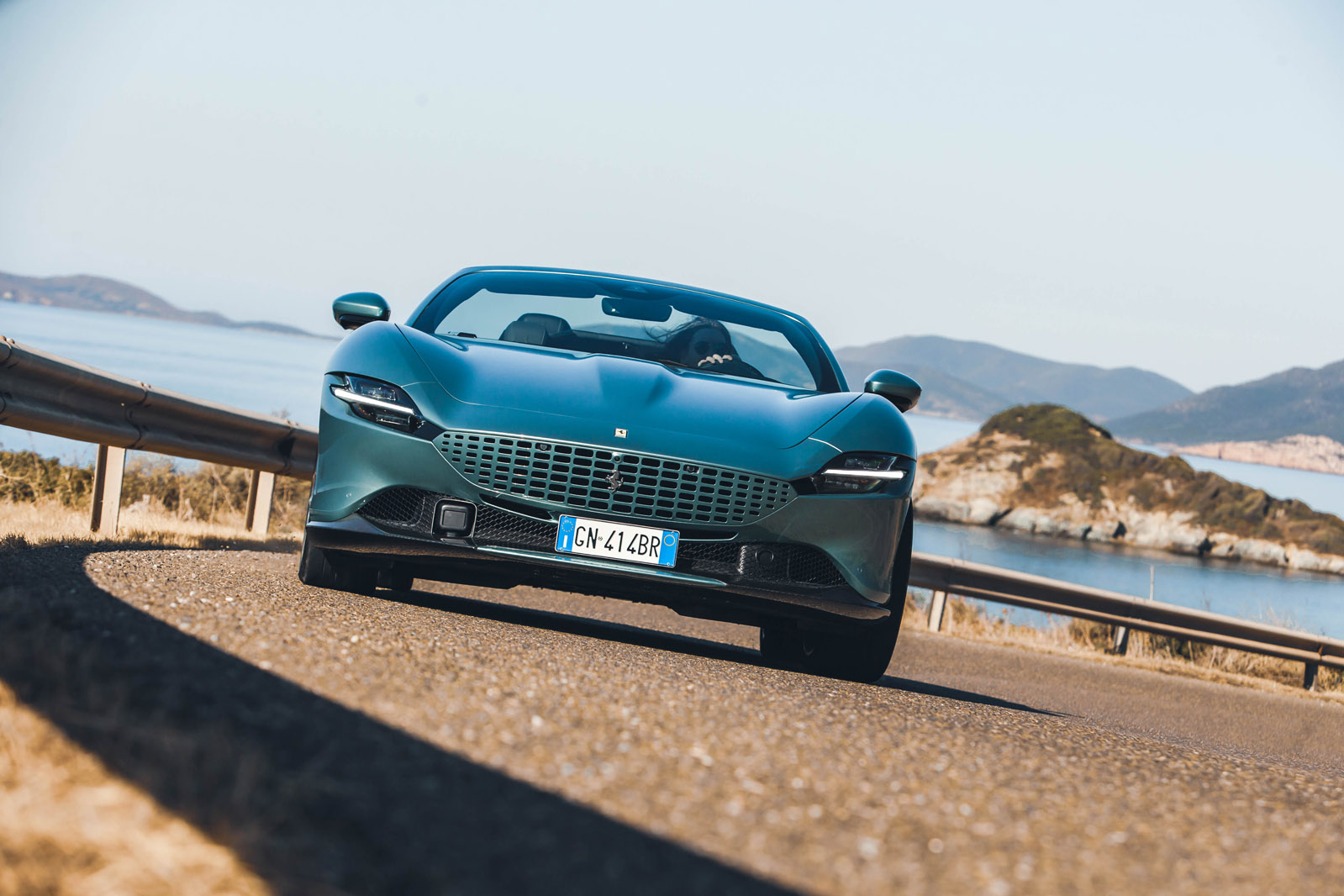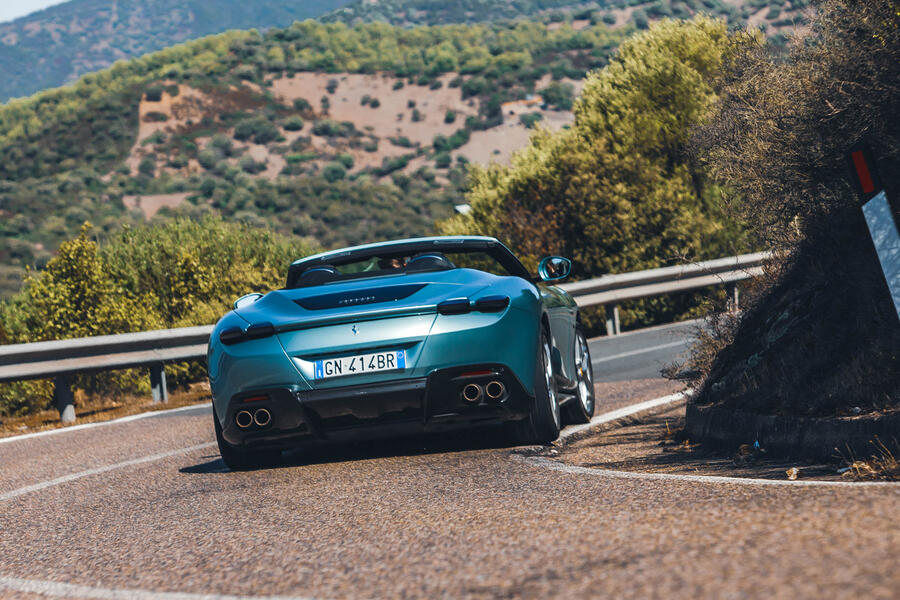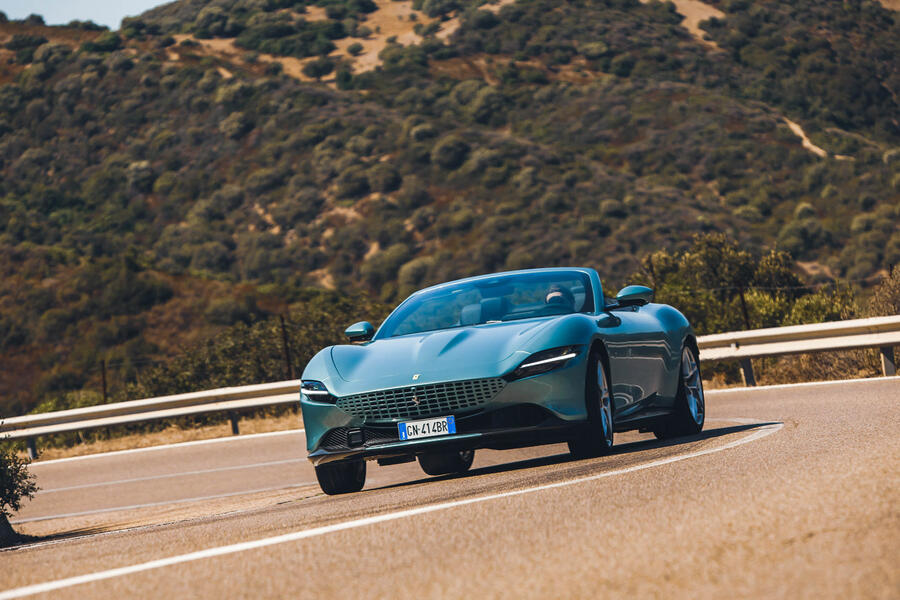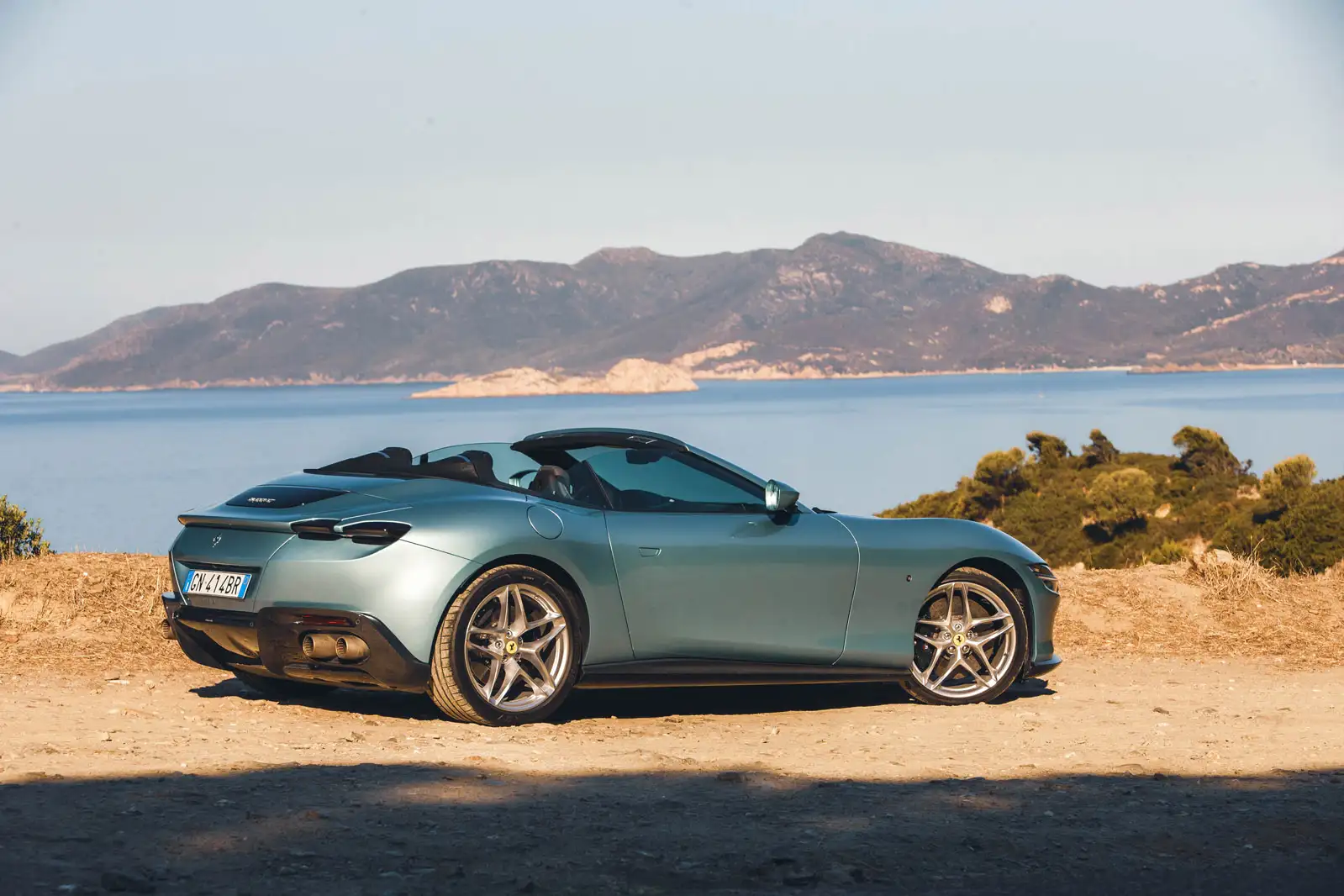Whenever a new mid-engined Ferrari coupé is launched, you can set your watch to the inevitable launch of the convertible version. But the front-engined V8 Ferrari Roma appeared in 2020, and then… nothing.
In some ways, that made sense. The Roma was positioned as the keen driver’s alternative to the Ferrari Portofino. It was a coupé with a more focused suspension tune, but also styling that was more subtly elegant, less shouty and more of a personal pleasure.
Anyway, you can forget most of that, because in comes the Ferrari Roma Spider, making the Portofino largely redundant. It’s a good thing that the latter is going off sale soon. You’d almost think Ferrari planned it like this.
Mind you, the drop-top Roma is still a slightly different proposition from the Portofino. The headline change is that Ferrari has abandoned the bulky, heavy, folding metal hard-top and gone back to a canvas roof.
Like Mercedes has with the latest Mercedes-AMG SL, Ferrari can do this because modern soft-tops are a far cry from the leaky tent you would have found on your Triumph Spitfire in the 1970s. The Roma’s is made from eight layers in total, has a glass rear window and folds up and down in a mere 13.5sec at vehicle speeds of up to 37mph. It’s available in six colours, including a special technical weave.



